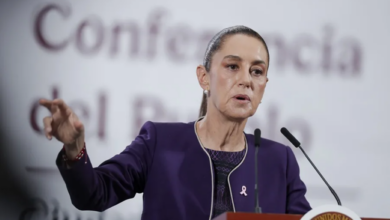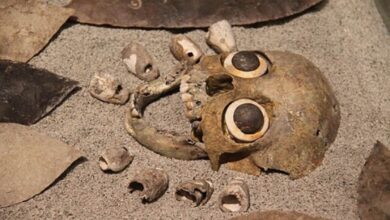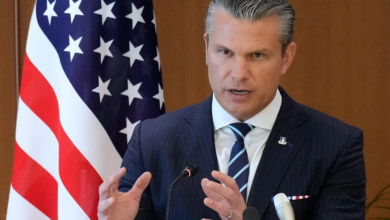Jalisco Cartel’s European Franchise Falls In Peaky Blinders Bust Operation

Spanish police, backed by the DEA and Dutch authorities, quietly dismantled a Jalisco New Generation Cartel “office” in Europe, seizing cocaine, meth, and silver bars from a surreal mix of Camorra fixers, Mexican envoys, and superstition-fueled santería couriers in Spain.
A Jalisco Franchise With European Ambitions
The plan sounded like something halfway between a prestige crime series and a cartel board meeting. On unremarkable industrial estates in the heart of Spain, the Cártel de Jalisco Nueva Generación (CJNG) was allegedly trying to open its first true European “franchise.” At the center of the attempt, according to police sources cited by EFE, stood the right-hand man of one of the most powerful drug lords in the Neapolitan Camorra and four Mexicans who favored the flat caps made famous by the TV series “Peaky Blinders.”
This was not improvisation. Investigators say the network formed part of a CJNG structure that brought large quantities of cocaine and methamphetamines from Latin America, especially from Costa Rica, hidden inside heavy industrial machinery. The drugs were destined for Spain and, crucially, for the broader European market. The ports of Porto, Portugal, and Rotterdam, the Netherlands, were being “explored” as entry points for future shipments, according to officials who briefed the press and were quoted by EFE.
Yet before the franchise could truly settle in, it was torn apart. In a joint operation involving Spain’s specialized anti-drug and organized crime units, the U.S. Drug Enforcement Administration (DEA) and Dutch police, officers moved in. The result: 20 arrests, with 15 suspects already in prison, a multinational cast of Spaniards, Mexicans, Colombians, and Italians suddenly cut off from their Jalisco supply line.
For the United States, which formally considers CJNG a terrorist organization, the bust signals a significant shift in international security dynamics, highlighting how drug trafficking organizations are expanding their reach into Europe and challenging law enforcement efforts worldwide.
Double Logos, Heavy Machinery, And A Cocaine Trail
The story did not begin with a spectacular seizure, but with small busts in Bilbao and Valencia more than a year ago. Those modest hauls contained a highly unusual clue: the bales of cocaine carried two logos instead of one, indicating a joint venture or partnership between different trafficking organizations, which is rare and signals increased cartel cooperation.
Following that trail of stickers and powder, Spanish agents, working closely with foreign counterparts, traced the supply chain to several industrial properties in central Spain. These estates, anonymous to passersby, allegedly served as coordination hubs and warehouses where the drugs were received, stored, and guarded.
From other premises in Talavera de la Reina, in the province of Toledo, the organization received and then re-exported heavy industrial machinery packed with hidden narcotics. The machines were sent on to Italy, where, investigators say, the network had direct ties to the Camorra. It was here that another key figure appeared: the right-hand man of Raffaele Imperiale, one of the most notorious Camorra-affiliated narcotraffickers, long on Italy’s most-wanted list until his arrest in Dubai in 2021.
In September, authorities detected the first cocaine shipment routed through Imperiale’s deputy, according to details made public and reported by EFE. That delivery, combined with the earlier seizures and surveillance on the industrial estates, gave investigators the pattern they needed. By the time raids were launched, the script the traffickers had written for their European expansion was already in the hands of the police.

Santería Rituals, Peaky Caps, And A Clean Businessman
Alongside logistics and mafia ties, the operation uncovered the strange rituals and beliefs that surround high-stakes crime. Among the detained were individuals involved in religious practices, like the ‘santero’ who believed his hat was a spiritual shield, highlighting the unusual personal elements of criminal operations.
When officers arrested the santero, they found him wearing a special hat he allegedly believed he could not remove for a year. According to police sources cited by EFE, he claimed the headwear was a kind of spiritual shield that would keep him from being arrested and ensure the shipments reached their destination without incident. The superstition failed him on both counts.
He was not the only one whose headgear caught the agents’ eye. The four Mexican suspects, identified as emissaries of CJNG who rotated through Spain for only three or four months at a time, also stood out. They reportedly liked to wear the iconic flat caps with visors associated with the “Peaky Blinders” gang in the BBC drama set in early twentieth-century Birmingham. The image of Mexican cartel envoys in British gangster caps, moving between Spanish warehouses and European ports, felt almost too on-the-nose until the arrests turned it into evidence.
The most crucial figure in the alleged franchise was a Spanish businessperson with no criminal record, who provided logistical support through several commercial companies and played a key role in laundering drug profits, illustrating how legitimate businesses can facilitate international trafficking networks.
To illustrate the operation’s scale, police seized around 70 kilos of silver ingots and coins, each worth up to 2,000 euros per kilo. This highlights the significant financial assets involved and the effort to launder profits from the cartel’s activities.
Silver Bars, Crypto, And A Seized Jalisco Dream
The final balance sheet of the operation is stark. According to Spanish police figures shared with the press. They reported by EFE, authorities confiscated 1,870 kilos of cocaine, 375 kilos of amphetamine, 275,000 euros in cash, cryptocurrencies worth around 15,000 dollars, three handguns, and 15 vehicles, alongside the 70 kilos of silver.
For law enforcement, this represents a significant blow against an organization that had already moved from “exploring” routes to actively using them. For CJNG, it is an expensive reminder that Europe may be lucrative. Still, it is closely watched, and alliances with the Camorra and other mafias do not guarantee invisibility.
The case is also a snapshot of how globalized the drug trade has become. A Mexican cartel, a Neapolitan crime syndicate, Colombian intermediaries, a Spanish businessman, ports in Portugal and the Netherlands, industrial estates in inland Spain, and a spiritual hat that was never supposed to come off: all of them collided in a single investigation.
In the end, the boinas inspired by fiction did not turn their wearers into untouchable Peaky Blinders, and the santero’s rituals did not keep the police away. The Jalisco dream of a European branch dissolved under fluorescent lights in police holding cells, leaving behind only court cases, seized silver, and a reminder that, in this business, myth travels faster than cocaine, but never quite outruns it.
Also Read: Venezuela on the Brink: U.S. Warships, Trump’s Threats and a Nation Waiting for the Next Move




